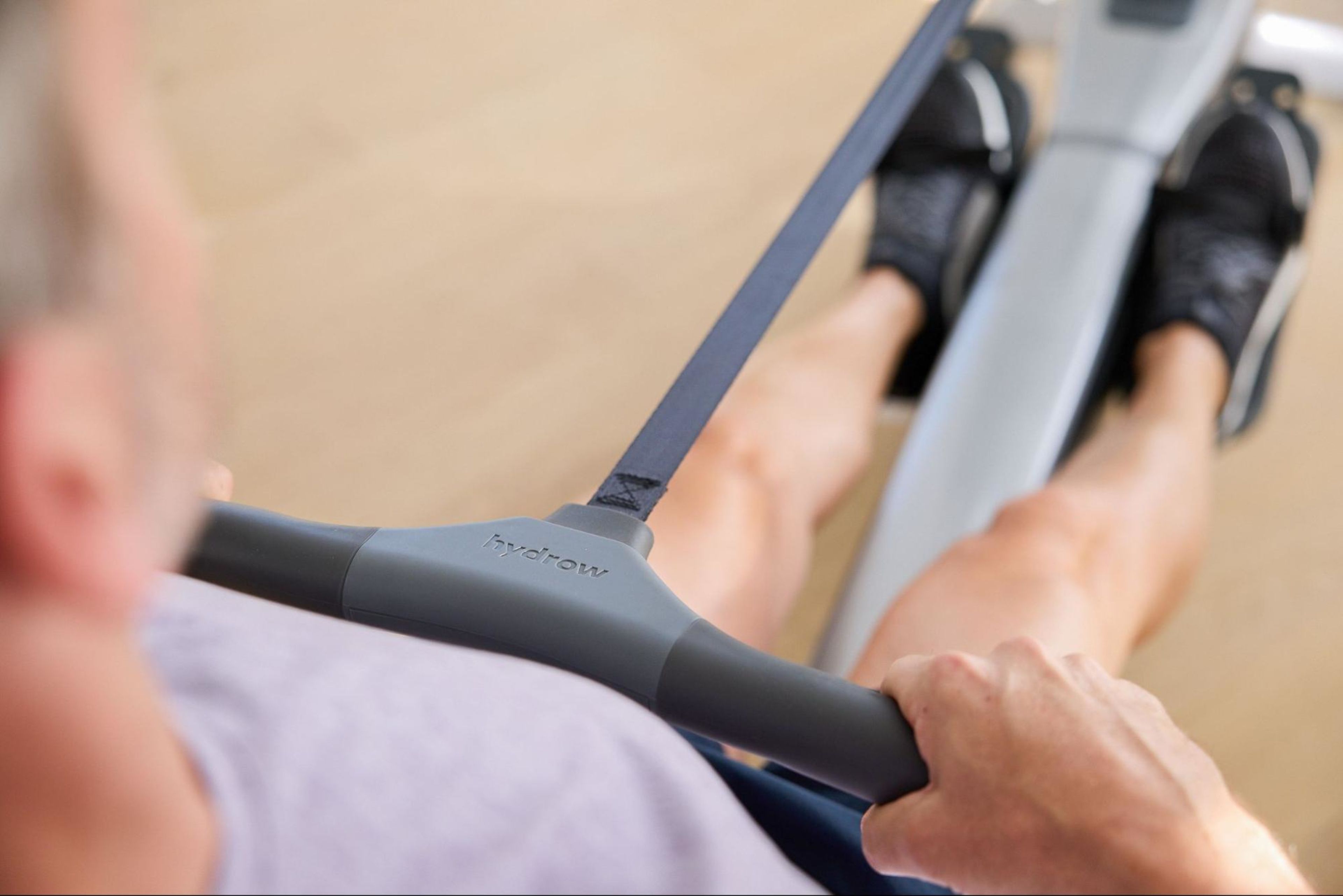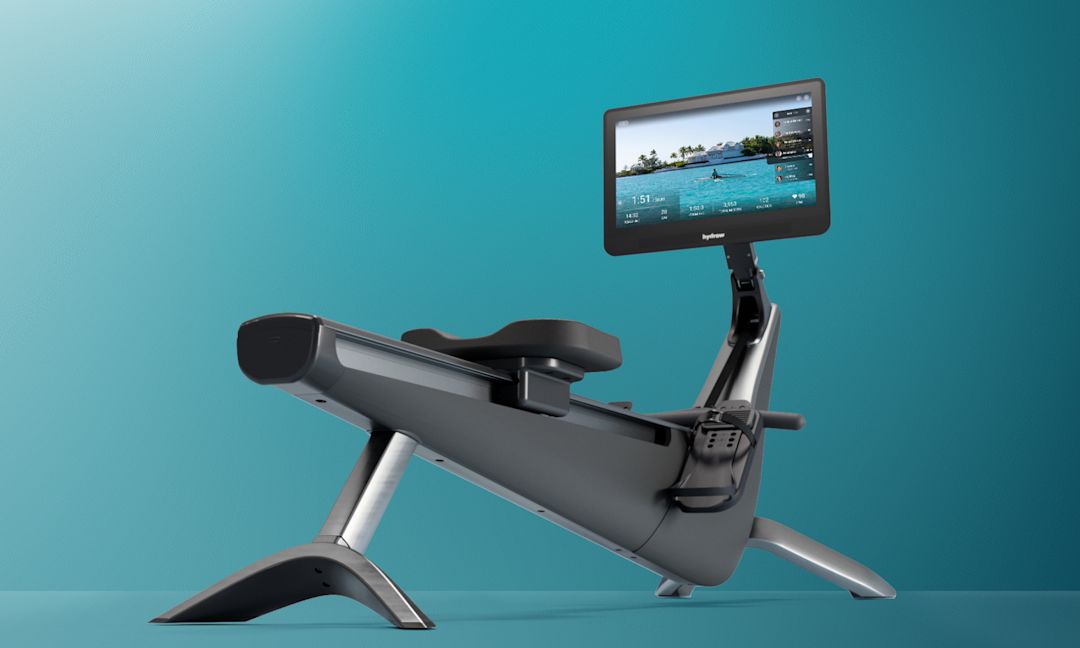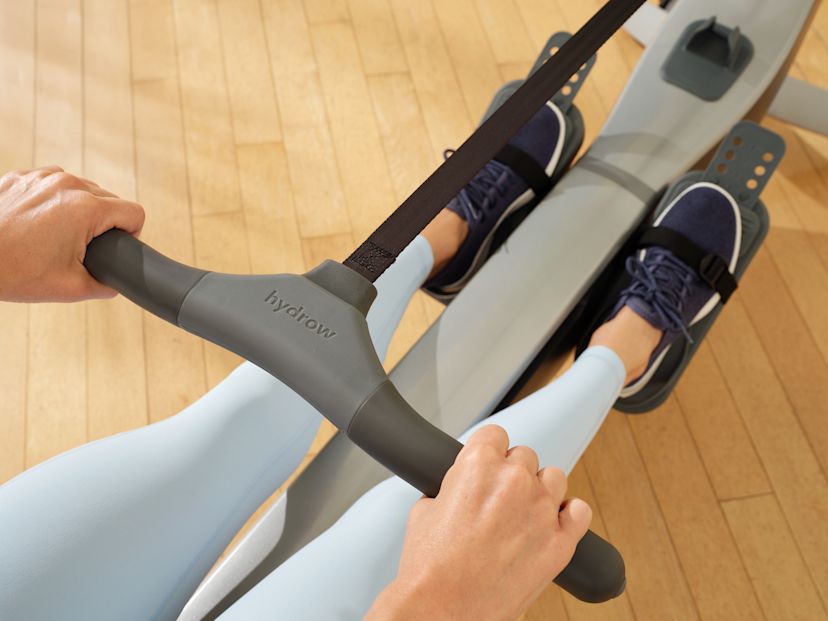Is Rowing or Cycling Better for Your Knees?

Maintaining joint health—especially the knee joint—is an important fitness goal, making it vital to factor in the current state of your knee joints when choosing the best exercises for you.
For example, if you already have pain or arthritis, you’ll probably choose a different exercise than if you have strong, healthy knees. And no matter what your current situation is, you want an activity that will relieve strain, increase mobility, and strengthen the muscles around your knees. You definitely don’t want to aggravate existing knee pain!
Many people turn to a low-impact workout to help with knee health, which leads them to consider workout types like rowing or cycling. But if you don’t have the home gym space or budget to include both a rowing machine and a stationary bike, you might be wondering which one is better for your knees.
Let’s take a look at the knee joint itself, and the pros and cons of both rowing and cycling to help you decide.

Holiday savings are here
Bring home our award-winning rowers at the best prices of the year.
Understanding the knee joint
To better understand common knee problems, it helps to understand basic anatomy of the knee joint and how it functions. The main parts of the knee joint include:
Femur (thigh bone)
Patella (knee cap)
TIbia (shin bone)
Fibula (calf bone)
Cartilage protects and lubricates ends of bones and creates a smooth surface for bones to move across each other.
Medial and lateral collateral ligaments located on either side of the joint keep the knee from moving too far side to side.
Anterior and posterior cruciate ligaments located in the center of the joint help move the knee through forward and back bending motion.
Medial and lateral meniscus provide shock absorption and weight distribution across the joint.
Many muscles and tendons surrounding the joint.
As you can see, knees are complex, with many moving parts. This makes the knee susceptible to injury and chronic pain.
Some common problems in the knee joint are:
Strained ligaments
Tears of the cartilage or ligaments
Tendonitis
Arthritis
These are not the only issues you can have with your knees, but these are common and can cause inflammation, stiffness, and pain. Any one of these issues makes exercise challenging if you’re not choosing the right activity. Inflammation, swelling, and stiffness makes moving through a full range of motion, or putting a lot of weight on your knees difficult.
If you’ve found yourself looking for exercises that are easy on your knees, you’re not alone—knee pain among adults is becoming increasingly common, affecting 25% of adults and growing by almost 65% over the past 20 years, according to the American Family Physician.
Related blog: The 15 Best Strength Training Exercises for Cyclists
The pros and cons of rowing for your knees
The pros of rowing for your knees
We already know rowing is a low-impact exercise, so rowing is not-weight bearing on your knees.
Another pro of rowing is that it involves your full body, so you’re spreading the workload of the exercise across more muscle groups, further reducing strain on your knees. Rowing engages your core and upper body more than any other type of cardio exercise. Strengthening your full body supports all your joints, and especially your knees. As your hips, glutes, and core all become stronger, they help support your whole body, including your knee joints.
Regular physical activity keeps your joints mobile and keeps chronic stiffness at bay. The more you move, the better you feel. Rowing allows for a comfortable, full range of movement without any jerky motion, pounding, or weight on your knees and surrounding muscles.
The cons of rowing for your knees
While rowing is an efficient, all-around workout, there are a few cons to consider. First, there is a steeper learning curve than other forms of exercise. It’s essential to make sure you’re using proper technique on a rowing machine to avoid injury or muscle strain. And the rowing motion is not something most people learn early in life like riding a bike or running.
Second, most rowing machines are low to the ground so they can be challenging to get on and off of if you have balance or proprioception issues.
The pros and cons of cycling for your knees
The pros of cycling for your knees
Like rowing, cycling is a low-impact cardio workout that burns calories and improves cardiovascular health. To add variety to your workout routine, there are a few types of bikes to choose from. You can use an upright bike, recumbent bike, and spin bike, or take your workouts outdoors with road bikes or mountain bikes.
Another pro of cycling is that you can change your position slightly on a bike to reduce strain on sore muscles. For example, you can sit upright or lean over the handlebars. Being able to change positions can allow you to ride for longer, giving you a more effective workout.
Cycling has a small learning curve. Once it’s adjusted properly, most people already know how to ride a bike. And you don’t have to worry about balancing a stationary indoor bike, like you do a traditional outdoor bike, so you can just focus on your workout.
The cons of cycling for your knees
Like rowing, there are cons to consider with biking as well. First, a properly adjusted bike is critical for avoiding knee pain and general discomfort. If your bike isn’t set up correctly, such as the wrong seat height or handlebar position, it can cause or exacerbate pain. This can be especially challenging if you share an exercise bike with other household members. Having to readjust the bike each time you use it can lead to mistakes and poor positioning. And, if you use cleated shoes, having the cleats in the wrong position can also cause knee issues.
Second, for most bikes, in order to increase the intensity of the workout, it’s necessary to either increase the bike’s resistance or stand up on the bike to pedal harder. Both of these can put added stress on your knees and contribute to pain and discomfort.
Related blog: Can Rowing Help Cyclists? Your Guide to Cross-Training
So, is rowing or cycling better for your knees?
Both rowing and cycling have positive benefits for exercise as low-impact workouts that boost your cardiovascular health. But rowing’s ability to enhance full-body strength and a full range of motion with minimal knee stress gives it the edge. If you only have space for one machine in your home gym, a rowing machine is an excellent investment in your knee health.
If you’re considering adding a rowing machine to your home, Hydrow brings more than just equipment—it brings total-body results and intelligent training.
Each stroke works 86% of your muscles, delivering an efficient, immersive workout—and with real-time feedback and personalized scores, Hydrow helps you help you row smarter, build strength, and stay motivated. Just 20 minutes a day is all it takes to move with purpose, boost energy, and see results that last.
Hydrow’s workouts are led by world-class and Olympic Athletes and filmed on real water in beautiful locations around the world. Whether you’re rowing or cross-training with yoga, Pilates, strength, mobility, or circuit workouts, you’ll find movement that motivates—and keeps you coming back.
Ready to train smarter? Explore what Hydrow can do for you.

Real strength keeps moving
Learn how working out with Hydrow can help support a fuller, more active life.







